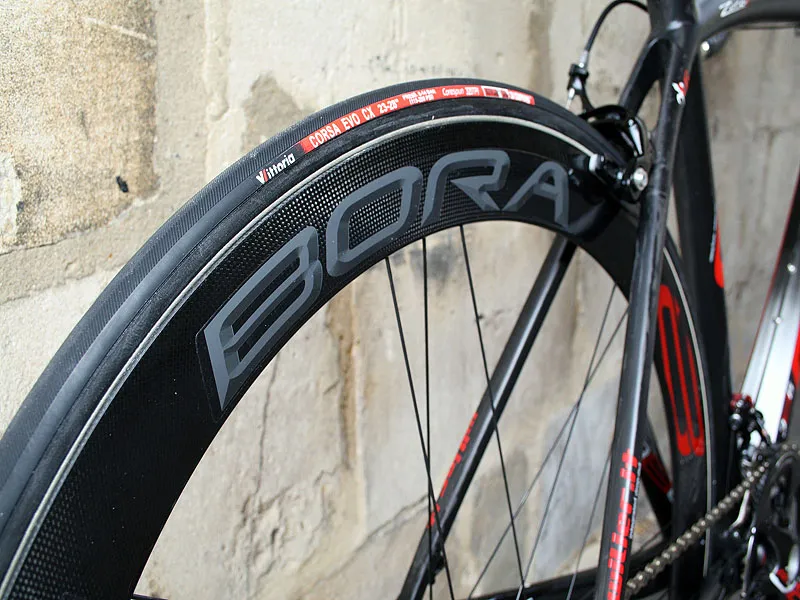Wilier Triestina say they set out to build their lightest bike ever, Zero.7, without compromise to its ride performance. The key is the use of BB386, which was developed in conjunction with FSA and launched at the Sea Otter Classic this past April.
Wilier claim the Zero.7 so stiff that all of a rider’s power is transferred to the rear wheel with ‘nearly zero’ loss. As we all know, resistance to deflection is only one attribute of a high performance bike, so Wilier also claim that stiffness is only one of the new Zero.7’s defining features.
The new bike is built with a new carbon layup technology that Wilier call S.E.I (Special Elastic Infiltrated), in which a ‘viscoelastic’ layer is placed in between layers of carbon to absorb road vibration. Wilier say that a S.E.I layup damps vibration, increases the impact resistance of the frame by 35-percent and the resistance to delamination within the carbon plies by 18-percent.

Wilier's lightest frame ever, the Zero.7
The bulk of the frame is made up of MR60H carbon fiber, which is cured with a special resin containing low-density Zinc Oxide. Wilier say the resin qualifies as a ‘nano particle’ epoxy and better fills the microscopic pores of the carbon, which produces a stronger, more compact laminate.
The ultimate benefit is that the new technology allows them to use more high-modulus material, thus less material overall, without the normally associated negatives of a harsh riding, brittle frame; and as can be assumed, less material means a lighter weight. Wilier claim 799g for a painted, medium sized Zero.7 frame.
Over the Zero.7’s three year development, Wilier say their engineers spent considerable time working with FSA to develop the BB386 bottom bracket and crank, which combines BB30’s 30mm aluminum spindle with an 86.5mm all-carbon press-fit bottom bracket shell. Wilier say the new design combines the best attributes from their previous integrated oversized bottom bracket used on the Cento1, with those of BB30. The bottom bracket shell is compatible with the majority of the industry’s other crank spindle sizes through the use of adaptors.

BB386 is Zero.7's key feature
The Zero.7 utilizes a tapered head tube and steerer, however, with a contemporary 1-1/8in to 1-1/4in dimension, which is a departure from a 1-1/2in commonly used on first generation tapered frames. The new taper is said to better the comfort and reduce the weight of the system.
The frame is molded using what Wilier calls ‘Large Inflatable Tube’ construction, a process that is said to offer better compaction and uniformity when compared to a more standard bladder molding process.
The frame will be offered in six sizes, from XS (46.5cm seat tube / 51.5cm top tube) to XXL (59cm seat tube / 58.5cm top tube).
More information at http://www.wilier.it/zero7.













